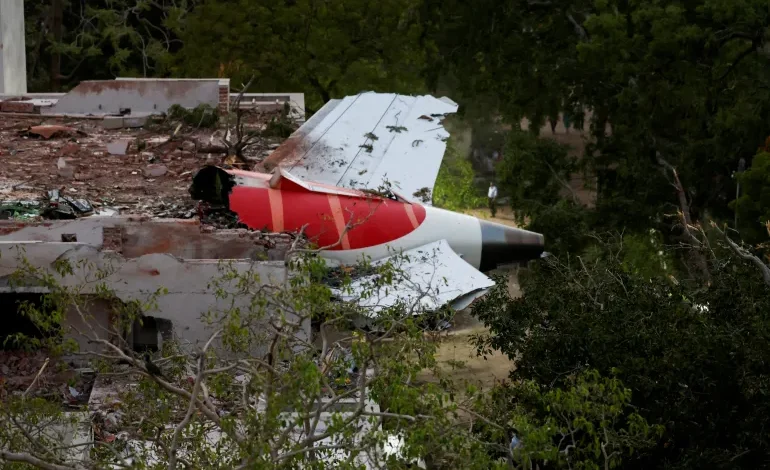
New Delhi: The Aircraft Accident Investigation Bureau (AAIB) has sharply criticized a recent Wall Street Journal (WSJ) report that implied pilot error in the fatal crash of Air India flight AI171, calling the publication’s coverage “selective and unverified.” The agency stressed that no official conclusions have been reached, and the investigation is ongoing.
Responding to the WSJ’s story, which cited early assessments and cockpit voice recordings to suggest the captain may have inadvertently shut off fuel to the engines moments after takeoff, the AAIB on Thursday urged media outlets and the public to avoid drawing premature conclusions. “Essential to respect the sensitivity of family members of deceased passengers, crew, and others who died on the ground due to the plane crash,” the AAIB said in a statement. The bureau operates under India’s Ministry of Civil Aviation.
Flight AI171 crashed in Ahmedabad on June 12, 2025, killing 260 people, including 19 on the ground. A screengrab from user-generated footage captured thick black smoke rising from a densely populated area near a medical college where the aircraft went down. The AAIB emphasized that updates on the crash investigation will be shared only when deemed necessary: “AAIB will publish updates on the Air India plane crash that have technical or public interest value as and when required.”
The agency further warned against speculative reporting. “It’s too early to reach any definite conclusions on the Air India plane crash; the probe is still not complete.” “The final probe report will come out with root causes and recommendations. Refrain from spreading premature narratives,” the AAIB added.
What the WSJ Report Claimed
The WSJ report, citing unnamed sources and U.S. officials familiar with the investigation, pointed to a conversation between Captain Sumeet Sabharwal and First Officer Clive Kunder shortly after liftoff. According to the publication, Kunder asked the captain why fuel to the engines had been cut off. Sabharwal reportedly denied doing so.
The article noted that the First Officer, who was at the controls, questioned why the fuel switches were in the “cutoff” position. U.S. pilots consulted by the newspaper speculated it was unlikely Kunder had changed the switches himself, as he was focused on flying the aircraft.
AAIB’s preliminary findings, released on Saturday, confirmed the fuel switches for both engines had moved from “run” to “cutoff” seconds after takeoff. A backup ram air turbine deployed immediately after, indicating complete engine failure. The agency’s initial report acknowledged that one pilot questioned the fuel cutoff while the other denied being responsible, though it did not identify who said what.
The plane attempted to restart its engines by switching the fuel flow back to “run,” but had already lost speed and altitude. It crashed into a building on a college campus, killing all but one of the 242 people on board. CCTV footage, flight data from the black box, and system logs are still under analysis by both Indian and international investigators.
Also Read: 1,563 Indians Deported from U.S. Since Trump’s Second Term Began: MEA




